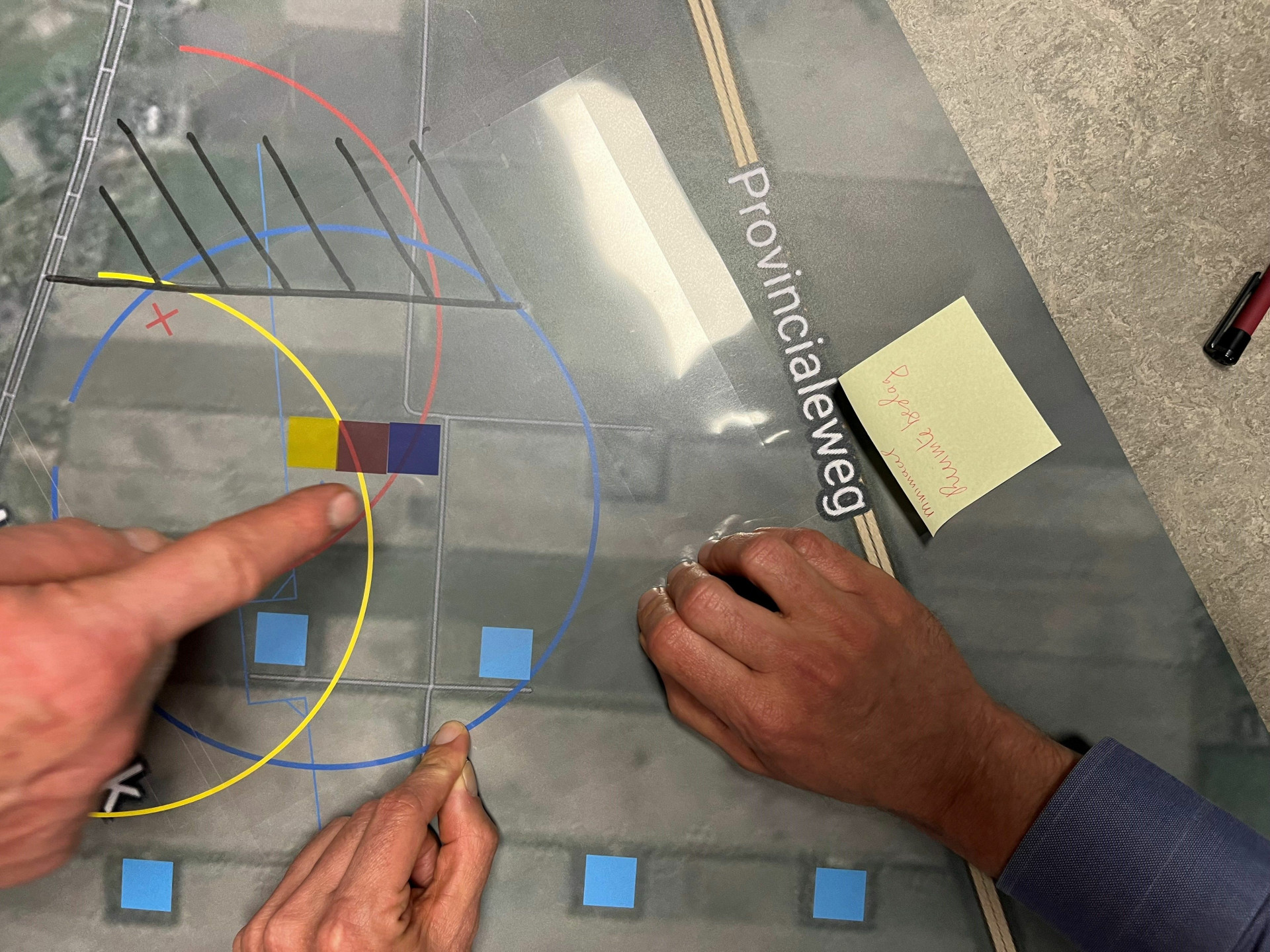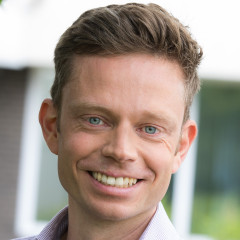Relationship with local communities
Relationship with local communities
Gasunie is committed to protecting the economic and social interests of local communities by minimising our negative impacts and creating positive impacts. With our energy transition projects and our investments in security of supply, we are engaging with local residents more than ever before.
Gasunie’s stakeholder engagement platform
The Gasunie stakeholder engagement platform has been set up to engage with people, businesses and organisations, from stakeholders like local residents, farmers, growers and contractors to government bodies and educational institutions, for example. Visitors can find all sorts of information on this platform, and they can also arrange various matters online, like scheduling a preliminary meeting or reporting crop damage. The platform also offers an interactive tool that allows people to see where a Gasunie pipeline is located and to instantly report a damaged or defective Gasunie asset, for example, or submit a data request. The platform service desk can be reached by phone, email and chat, and a contact form is available for use outside office hours. In the coming years, information about our new CO2, hydrogen and heat networks will be added to the Gasunie stakeholder engagement platform.
The Dutch hydrogen transmission network
Gasunie subsidiary Hynetwork Services is developing the Dutch hydrogen transmission network step by step, based on a rollout plan published by the Ministry of Economic Affairs and Climate Policy in mid-2022. For the regions of Zeeland, Drenthe/Overijssel/Groningen and the North Sea Canal Area, in 2023 we published our draft proposal for public consultation and invitation to respond, after which information evenings and meetings for landowners took place. Based on further insight we gained into a number of factors, we saw that the rollout plan would need to be altered; accordingly, we proposed an adjustment to the plan and published this for consultation purposes. We have since engaged with all parties who responded. The Ministry of Economic Affairs and Climate Policy will determine the adjusted rollout plan.
HyStock
In Zuidwending, HyStock is working on the development of an initial cavern for the large-scale storage of hydrogen, and on obtaining permits for this. We hold regular catch-up sessions with local residents, and we organised a drawing board session in 2023 (see elsewhere in this section for more details), during which we jointly determine the locations for the above-ground facilities for the cavern. Partly thanks to the intensive dialogue we have been carrying out with local residents, we hope to complete the permit process for test drilling without delay in 2024.
WarmtelinQ
Due to the extensive excavation works, WarmtelinQ is a project with significant impact on the local communities, especially in The Hague. Residents in two of these communities, Moerwijk and Transvaal, represent more than 100 nationalities. These are communities with low literacy rates and a high rate of residents with poor job prospects. Accordingly, WarmtelinQ’s approach focuses on personal, one-on-one contact with local residents, facilitated by having walk-in consultation periods, residents’ information evenings, consultations with local residents, open days, communicating through social organisations and schools, and operating coffee carts in the neighbourhood. Like a good neighbour, we want to give something back to the community. For example, we are providing financial support for the redevelopment of the local park in Transvaal, a place where many local residents get together in the summer. What’s more, a number of local residents are now working for the contractor – for facility services and earthworks.
Delta Rhine Corridor
For the Delta Rhine Corridor, we will be publishing the memorandum on the scope and level of detail in 2024 and starting the environmental impact assessment. We published the draft proposal for public consultation and invitation to respond for this project in May and June 2023. In June, we were present at ten information days for local residents and landowners located along the pipeline route, which was organised by the Netherlands Enterprise Agency (RVO). The responses to the invitation to respond are now being used to further develop the public consultation process. An online talk show about the Delta Rhine Corridor has also been created for local residents.
PAWOZ-Eemshaven
The Eemshaven Offshore Wind Energy Connection Programme, or PAWOZ-Eemshaven in Dutch, is investigating the options for future cable and pipeline routes from offshore locations in the North Sea to the port of Eemshaven. The installation of cables and pipes can impact the local environment and local communities. The interests of nature, agriculture, people, businesses and organisations in the area can be affected, positively or negatively, by these activities. In its role as a network operator, Gasunie participated in 13 information days for local residents and landowners organised by the Netherlands Enterprise Agency (RVO).
Gasunie Deutschland
Given the current stage of development of the projects, in terms of communication with local communities, last year Gasunie concentrated on representatives of the political community and the regional media, and therefore only indirectly on local residents. This communication involved approximately ten interactions. In 2024, we will inform residents more intensively about our new projects through information meetings and construction site visits.
Engaging the community right at the drawing board
Determining the best locations for three cavern facilities together with local residents
Our activities have an impact on local communities, which is why Gasunie invests in having a good relationship with its neighbours. We inform local residents about what we are doing and what we plan to do in the area. At the Energiebuffer Zuidwending site we took this one step further. Three new above-ground facilities will be built here for the storage of hydrogen in salt caverns deep underground. We discussed with local residents which locations they liked best and why.
Directional drilling
The caverns are being constructed by salt extraction company Nobian. Each underground cavern will have an asphalt plate above ground on which the related facilities and connections will be installed. Though Nobian could bore straight down to connect the salt cavern with the above ground facilities, they can also bore at a slant using what’s called ‘directional drilling’. This allows much more scope for where the asphalt plate can be installed, within a radius of 300 meters for each cavern, it emerged. So, in April we invited the residents of 90 homes overlooking land within the search radius to a drawing board session.
Shifting locations on a map
About 35 local residents participated in the session. They were divided into three groups, each of which included a representative of Gasunie and Nobian. Using a map and transparent sheets, participants indicated where they would install the above-ground plates and explained their reasons for this. The preferences of the three groups were then shown on one digital map and the considerations listed, like protecting landscape sightlines, or seeing that these plates are installed close to existing sites. We combined this input with all other interests and made an informed decision a few weeks later, sharing that decision with local residents of course.

New Dutch Environment and Planning Act
It is our policy to organise and promote participation by citizens and other stakeholders. In 2023, we were already working on several projects in accordance with the provisions of the new Dutch Environment and Planning Act in effect from 2024. However, discussing preconditions for sites together with local residents was new to us. People offered their ideas and considerations, listened to each other, and also considered the interests of other local residents. Every situation is unique and so the ‘landscape integration process’ for the next project will undoubtedly be different again. At any rate, in this case we have gained valuable experience on how to set up a drawing board session.
It was a great session: interactive and practical. Normally, participants would be given a presentation as a group and could ask questions afterwards. In this case, our people from Gasunie and Nobian kept their distance and allowed the local residents to move about and discuss matters among themselves. That resulted in great conversations and made the session much more personal.

